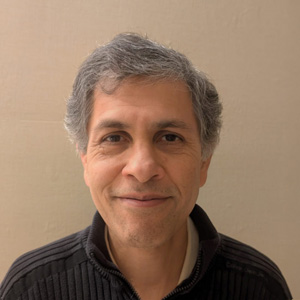
Mr. Lacky Vasant Shah is currently the VP of Architecture at Nvidia Corp.
After his B.Tech. at IIT Bombay he received his MS in Computer Science from UC Berkeley, USA, in 1994.4
Mr. Shah’s career in computer architecture began after graduating from UC Berkeley.
At Hewlett Packard, he joined the compiler group for PA RISC architecture, where he:
– Optimized numerous applications for PA RISC machines.
– Pioneered dynamic code translation technologies, resulting in multiple patents.
– Enhanced overall system performance through innovative compiler techniques.
– Optimizing low-power architecture designs and innovative validation techniques.
– Developing and refining code morphing software.
During this period, he co-founded Omnishift, a startup aimed at:
– Building a distributed file system for app streaming over the internet.
– Exploring novel use cases for distributed computing storage.
Since 2004, he has been an integral part of NVIDIA’s Architecture department, where he has:
– Contributed to multiple generations of GPU architectures.
– Driven innovations in parallel computing and AI acceleration.
– Helped establish NVIDIA as a leader in high-performance computing and artificial intelligence.
Throughout his career, Mr. Shah has consistently worked at the forefront of computer architecture, from optimizing traditional CPU designs to pioneering energy
efficient computing and leading the evolution of GPU technology. His experience spans compiler optimization, low-power design, distributed systems, and cutting edge GPU architectures, reflecting a commitment to advancing computing capabilities across diverse domains.
He has been instrumental in shaping GPU technology across multiple generations, including the groundbreaking Ampere, Hopper, and Blackwell architectures for the data centre market. For over a decade, his contributions have influenced several key sectors.
In data centres and AI, he spearheaded innovations enabling the training of trillion-parameter language models and high throughput inference at scale. For gaming, he architected many features, setting new standards for visual fidelity and performance. In high-performance computing, he drove advancements in the CUDA ecosystem, democratizing GPU-accelerated computing for scientific research. For automotive applications, he developed specialized architectures enabling real-time AI inference crucial for autonomous driving. Mr. Shah’s work has contributed to accelerating AI model training and inference by orders of magnitude, reducing costs, and enabling more complex models. These innovations have established NVIDIA GPUs as the de facto platform for AI/ML frameworks and enabled breakthroughs in generative AI, computer vision, and natural language processing. Through these contributions, he helped make AI technology more accessible and powerful, driving its integration into diverse applications and profoundly impacting society, from enhancing scientific research to revolutionizing content creation and improving healthcare diagnostics.
Any other interesting fact about yourself that you would like to share: I have a lovely wife, Kunjan, and a son, Rohan.
Hobbies: I am an avid squash player, and I enjoy running, skiing, hiking, and other such outdoor activities.
Special Memories Associated with IIT Bombay
I have been very deeply inspired by the late Prof. Dhamdhere, Prof. Diwan, and Prof. S.S.P. Rao, whose classes remain etched in my memory. I cannot also thank Prof. Phatak and Prof. Pushpak Bhattacharya enough for their teachings and, more importantly, their friendship.
